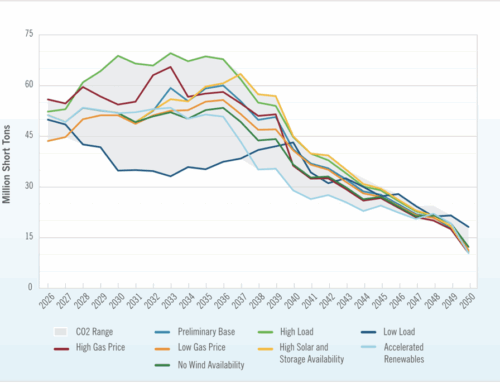The Cannabis Industry’s $6 Billion Debt Wall
October 1, 2025
A debt avalanche is bearing down on the U.S. cannabis market to the tune of roughly six billion dollars coming due by the end of 2026, with the top five borrowers—each a multi-state operator (“MSO”)—accounting for about $3.4 billion. The sector’s reliance on costly debt, born of limited access to traditional capital, has set the stage for a potentially messy, uneven reckoning.
Why this matters now
- Scale and timing: The maturities bunch up into 2026, compressing the refinancing window and elevating risk across the ecosystem.
- Cash flow stress: Many capital structures are expensive, and several operators still burn cash, curbing their ability to refinance on favorable terms.
- Market significance: Despite headwinds, cannabis generated $32 billion in 2024 revenue, employed 400,000+ people, and contributed $4.4 billion in state taxes—meaning outcomes here have real economic spillovers.
How it’s playing out
- Proactive refinancing: One MSO refinanced $360 million into a $325 million senior secured term loan maturing in 2030 at 12.5 percent, pushing out near-term risk and shoring up flexibility.
- Early negotiations: Another top MSO holds $403 million of debt with $350 million due October 2026 and has begun refinancing talks while cutting costs and managing cash.
- Forced restructurings: A well-known MSO, facing $368 million due in 2026, is selling licenses across eight states and winding down operations to satisfy lenders.
- Hardening lender stance: Litigation around overleveraged operators signals a shift from “extend-and-pretend” toward enforcement, revaluations, and potential receiverships.
Implications for the industry
- Consolidation and asset churn: Expect more sales of licenses, retail footprints, and cultivation assets. Stronger balance sheets will pick up distressed assets at revised valuations.
- “Zombie” risk: Some operators may continue serving customers while functionally insolvent, tying up capital and complicating competitive dynamics until creditors force resolutions.
- Cost of capital: Rates remain elevated for cannabis credits. Even successful refinancings will likely price high and carry tighter covenants.
- Policy and permitting friction: Local moves, like Somerville, MA’s, nine-month extension of its moratorium on new Host Community Agreements restrict new retail entries. Slower store rollouts reduce growth optionality—making debt service harder and business plans riskier.
What this means for other cannabis businesses
- Tighter vendor terms: As credit tightens, suppliers may shorten payment windows and demand deposits or collateral.
- Survival through discipline: Free cash flow discipline, early dialogue with creditors, and operational cost takeouts become the difference between refinancing and restructuring.
- Opportunity for the prepared: Well-capitalized operators can acquire quality assets from distressed sellers and expand selectively.
- Be refinancing-ready: Maintain clean financials, prove stable store-level EBITDA, and show credible paths to paydown or refinance.
What this means for financial institutions already invested in cannabis
- Portfolio triage: Categorize credits by refinancing probability and cash flow coverage. Prioritize proactive amendments now rather than last-minute forbearance.
- Expect revaluations: Collateral values and enterprise multiples are resetting.
- Engage early: Negotiated solutions can produce better recoveries than enforcement.
- Operational oversight: Require tighter reporting, borrowing bases, and milestones. Push for cost rationalizations before liquidity pinches.
What it means for institutions looking to lend
- Underwrite to cash, not hope: Favor operators with positive cash generation, moderated capital expenditures, and proven margins. License count isn’t a proxy for durability.
- Structure for downside: Senior secured positions, real collateral, financial covenants, sweep mechanics, and step-in rights matter (i.e., through a receivership process given the highly regulated nature of the industry).
- Pick your spots: Sale-leasebacks and selective senior term loans to cash-flowing operators can work. Avoid broad exposure to markets with permitting moratoria or stalled store openings unless potential upsides compensate.
- Move early: Issuers that engage 12–18 months ahead of maturity are salvageable. Those that wait may only have distressed options.
- Syndicate and specialize: Partner with experienced cannabis lenders, workout advisors, and restructuring counsel who live and breathe the licensing and regulatory terrain and have deep experience with financing and restructuring.
Near-term outlook
- A bifurcated market: Some MSOs will extend maturities and stabilize. Others will consolidate or exit. A few will litigate while values reset.
- Talent and tax base at stake: With a large employment footprint and material state tax contributions, orderly restructurings are preferable to abrupt failures.
- Not all doom: As heavy capital expenditures fade and company footprints are right-sized, the best credits are becoming more financeable—if they demonstrate consistent cash flow and credible deleveraging plans.
Bottom line, the 2026 debt wall will catalyze a shakeout—less about whether capital is available, and more about who’s earned it. Operators that get ahead of maturities, prove cash discipline, and work collaboratively with lenders will survive and even scale. For financial institutions, the risk is real but so is the opportunity—provided you underwrite to cash, structure for downside, and act early.
Search
RECENT PRESS RELEASES
Related Post




